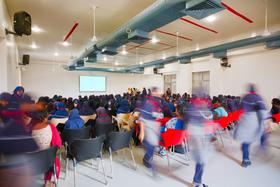Emerging Challenges for Boarding Schools (2025 Update)
In the evolving educational landscape, boarding schools remain symbols of tradition, academic rigor, and personal growth. They prepare students for college and life by fostering independence, resilience, and community values. Yet in 2025, boarding schools face a set of challenges more complex than ever—spanning finance, marketing, facilities, governance, and staffing.
This article explores the emerging challenges for boarding schools in 2025 and offers practical strategies for administrators, educators, and families.
Marketing Challenges in a Digital Era
Boarding schools once relied on reputation and word-of-mouth. Today, families expect transparency, personalization, and proof of value. According to the National Association of Independent Schools, parents increasingly compare tuition against outcomes such as college placement, career readiness, and mental health support.
Digital marketing is now essential. Schools must leverage search engine optimization, style="line-height:1.38;margin-top:12pt;margin-bottom:12pt;">For example, Phillips Exeter Academy recently expanded its virtual admissions outreach, hosting multilingual webinars to engage international families unable to visit campus. This blend of tradition with digital tools is becoming a new norm.
Rising Costs of Insurance and Security
The cost of liability and property insurance has surged. Natural disasters, cyberattacks, and litigation risks drive premiums higher each year. A 2024 Forbes report found that independent schools face average insurance cost increases of 18–25% annually. Boarding schools, with round-the-clock operations, are particularly vulnerable.
Cybersecurity is now a critical concern. In the past two years, several boarding schools have reported ransomware attacks that disrupted admissions and financial aid systems. Beyond insurance, schools must invest in cybersecurity staff, secure data storage, and student training.
Physical safety has also required upgrades: expanded surveillance systems, stricter visitor protocols, and crisis management training. While these steps enhance safety, they also strain budgets already stretched by tuition assistance demands.
Facilities Maintenance: Balancing Legacy and Innovation
Many boarding schools boast historic campuses, yet maintaining these iconic buildings is costly. Deferred maintenance is no longer sustainable—families expect state-of-the-art facilities that reflect tuition costs (often exceeding $65,000 annually at top-tier schools).
Schools are now pursuing green building initiatives, energy-efficient retrofits, and partnerships with local contractors to manage costs. Lawrenceville School, for instance, has invested in solar energy systems projected to save millions over the next decade while aligning with student interest in sustainability.
The challenge lies in balancing tradition with modernization: preserving heritage while offering technology-rich learning environments that rival leading day schools.
Recruiting and Retaining Trustees
Strong governance is central to a boarding school’s long-term success. Yet in 2025, attracting trustees who bring both expertise and time commitment is increasingly difficult. Many schools now recruit trustees with backgrounds in finance, law, technology, and mental health to meet today’s complex demands.
Clear expectations, mentorship opportunities, and visible recognition help maintain trustee engagement. Schools that successfully recruit trustees often turn to alumni networks, where loyalty and lived experience align with strategic vision.
Teacher Recruitment and Retention
Perhaps the most pressing challenge for boarding schools is recruiting skilled, well-credentialed teachers. Public schools, benefiting from increased federal and state investment in teacher salaries, are now often more competitive financially. Meanwhile, the demands of boarding school life—long hours, campus duties, and expectations of residency—can deter potential candidates.
To remain competitive, boarding schools are offering:
Housing assistance and family-friendly benefits
Loan forgiveness programs for teachers who stay beyond five years
Professional development in AI, DEI, and global studies
Flexible teaching schedules to support work-life balance
As one head of school noted in a recent Wall Street Journal interview, “The boarding school of 2025 must not only attract top teachers—it must convince them that the lifestyle is sustainable.”
Conclusion: Adapting Without Losing Identity
The emerging challenges for boarding schools in 2025—rising costs, governance complexity, teacher shortages, and digital disruption—are significant but not insurmountable. Success will depend on resilience, adaptability, and a willingness to innovate while remaining true to the traditions that define the boarding school experience.
Families seek institutions that prepare students academically, socially, and emotionally for the future. Boarding schools that address these challenges head-on will continue to thrive as leaders in independent education.












